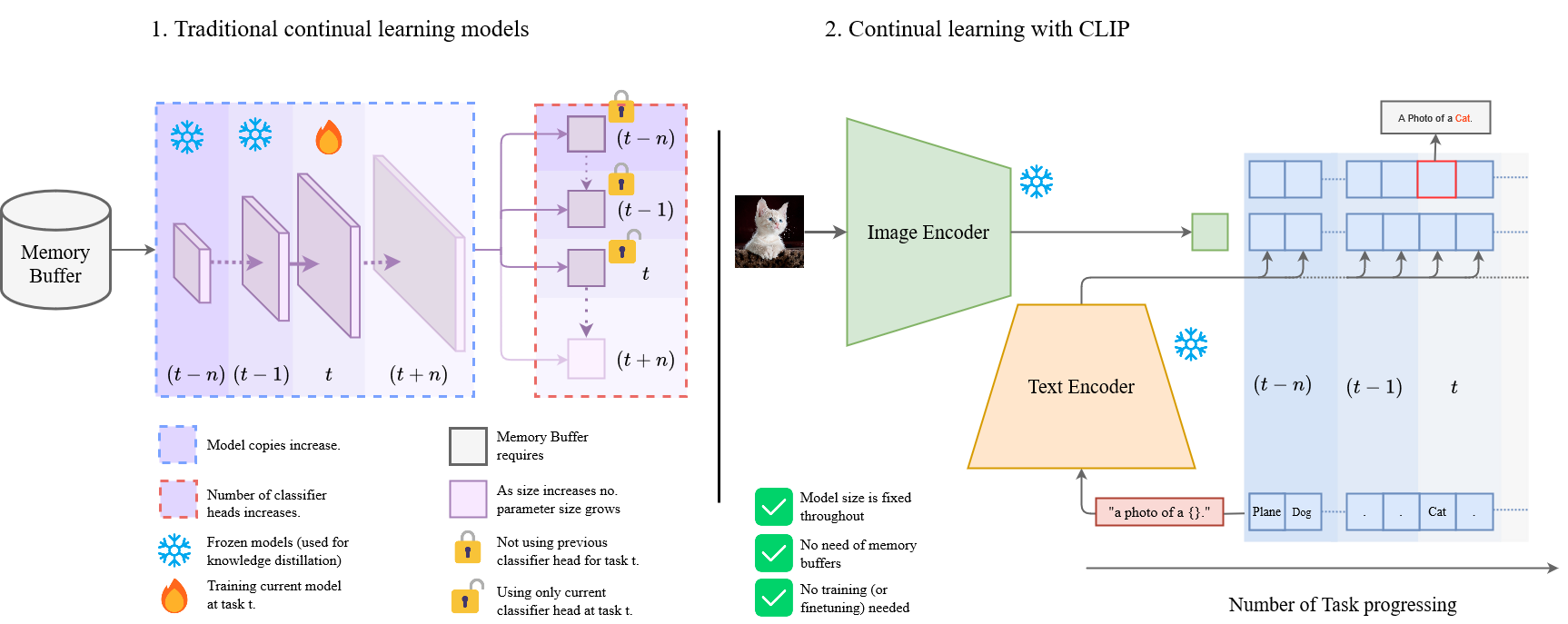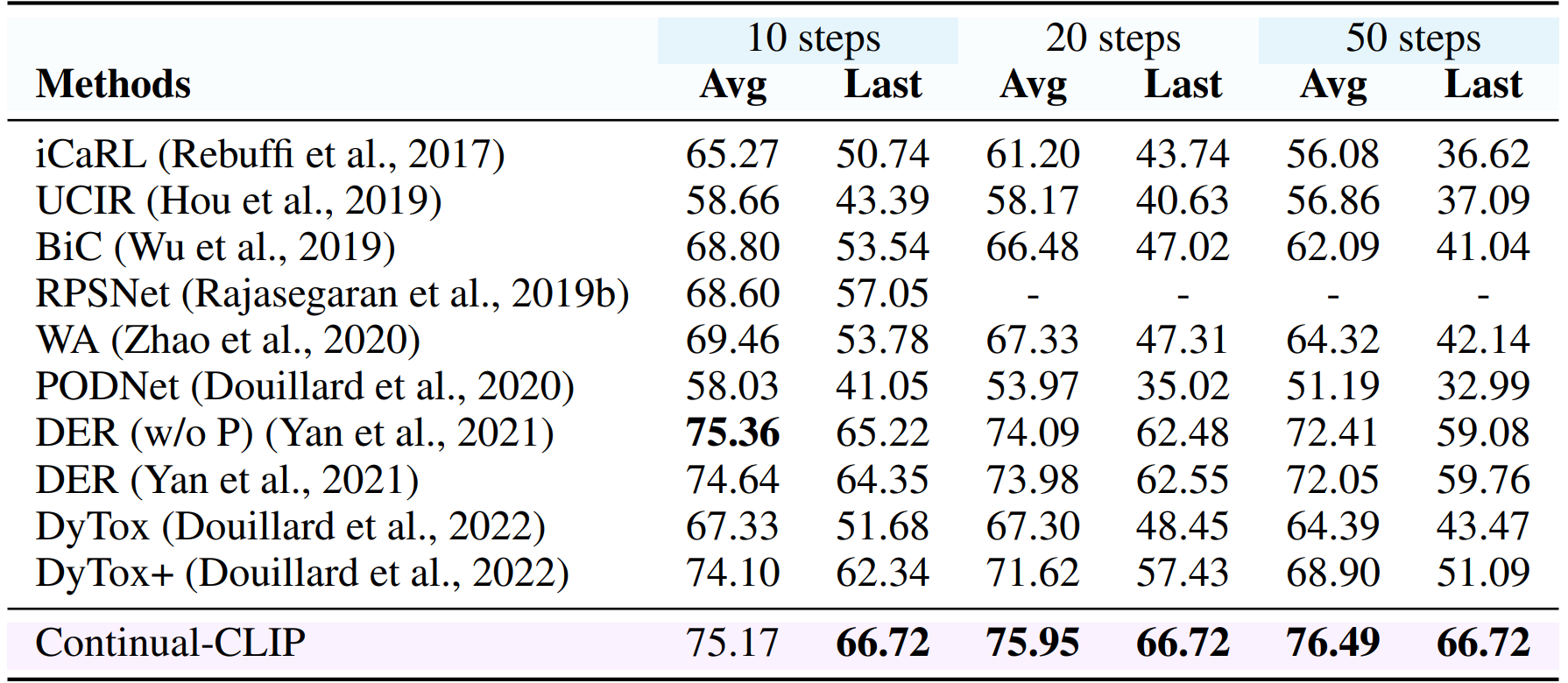CLIP is an Efficient Continual Learner
by Vishal Thengane, Salman Khan, Munawar Hayat, Fahad Khan
- (Dec 13, 2022)
- Released code for domain and task-agnostic settings.
- (Oct 08, 2022)
- Released code for class incremental setting.
- (Oct 03, 2022)
- Repository created.
The continual learning setting aims to learn new tasks over time without forgetting the previous ones. The literature reports several significant efforts to tackle this problem with limited or no access to previous task data. Among such efforts, typical solutions offer sophisticated techniques involving memory replay, knowledge distillation, model regularization, and dynamic network expansion. The resulting methods have a retraining cost at each learning task, dedicated memory requirements, and setting-specific design choices. In this work, we show that a frozen CLIP (Contrastive Language-Image Pretraining) model offers astounding continual learning performance without any fine-tuning (zero-shot evaluation). We evaluate CLIP under a variety of settings including class-incremental, domain-incremental and task-agnostic incremental learning on five popular benchmarks (ImageNet-100 & 1K, CORe50, CIFAR-100, and TinyImageNet). Without any bells and whistles, the CLIP model outperforms the state-of-the-art continual learning approaches in the majority of the settings. We show the effect on the CLIP model's performance by varying text inputs with simple prompt templates. To the best of our knowledge, this is the first work to report the CLIP zero-shot performance in a continual setting. We advocate the use of this strong yet embarrassingly simple baseline for future comparisons in the continual learning tasks.
First clone the repository by running following command:
git clone https://github.com/vgthengane/Continual-CLIP.gitThen create an environment and install dependencies:
bash setup_environment.shThen run the following command (or use run_experiment.sh) for the class-incremental settings (I'm taking an example of ImageNet-100 dataset for 10 classes in each task but you can use any other dataset and setting).
python main.py \
--config-path configs/class \
--config-name imagenet100_10-10.yaml \
dataset_root="../datasets/" \
class_order="class_orders/imagenet100.yaml"
Dataset preparation instructions will be added soon. Sorry for the inconvenience.
If you end up using our work, please consider citing:
@article{thengane2022continualclip,
title={CLIP model is an Efficient Continual Learner},
author={Thengane, Vishal and Khan, Salman and Hayat, Munawar and Khan, Fahad},
journal={arXiv:2210.03114},
year={2022},
}If you have any questions, please create an issue on this repository or contact Vishal Thengane.
Our code is based on DyTox repository. We thank the authors for releasing their code.


